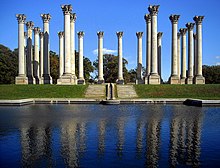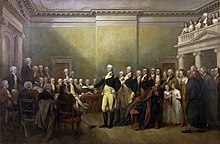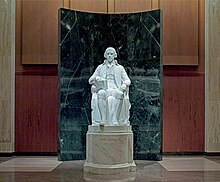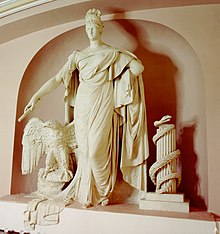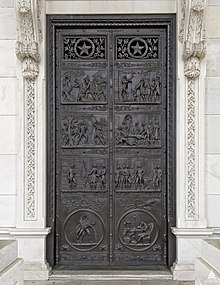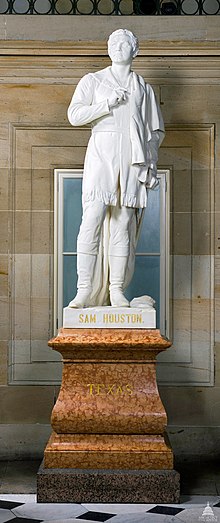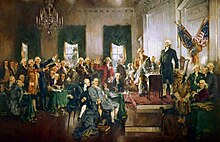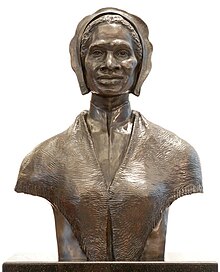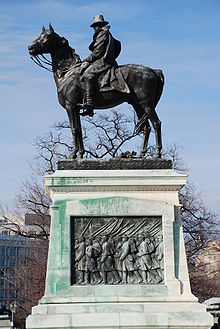List of artwork at the United States Capitol complex
[3][4] The first recorded piece, First Cornerstone, was set in 1793, and was the first stone laid in the construction of the main Capitol Building.
[5] Since then, hundreds of pieces have been installed within the complex, including statues, oil paintings and wall engravings.
The most recent piece installed in the complex[note 1] is the Statue of Billy Graham, which was unveiled to the public in May 2024.
[11] During the January 6 United States Capitol attack in 2021, rioters heavily damaged six statues and two paintings, including the Bust of Thomas Jefferson.
Leopold Scholz Edmond Baudin Simon Willard G. Julian Zolnay Benjamin H. Latrobe
















































